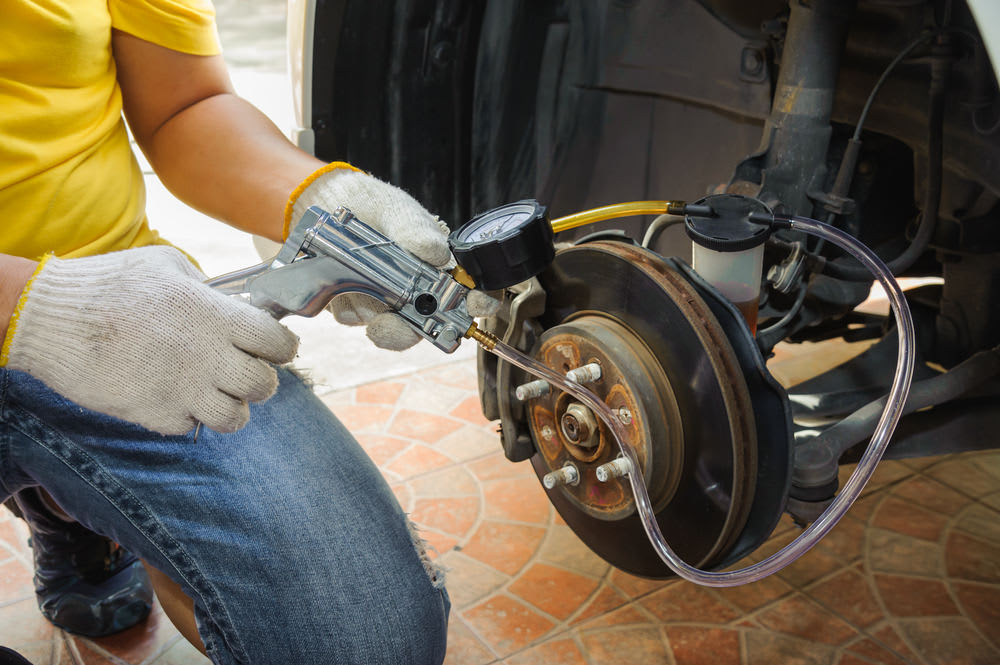

While it sounds like a medical procedure, bleeding the brakes is a common maintenance procedure that needs to be done on a regular basis in order to keep a vehicle operating safely.
Bleeding the brakes falls under the routine maintenance category, and should be performed over the life of a vehicle. Most experts recommend bleeding your brakes every 2 to 3 years to keep them in tip-top shape.
What exactly is bleeding your brakes?
Over time, small amounts of air become trapped within the brake line. This can lead to spongy brakes or a brake pedal that goes almost to the floor before engaging. This can create a dangerous condition and should be addressed as soon as it becomes apparent. If the braking system ends up with large amounts of air in it, a complete braking failure is possible.
How does the air get into the system? Severely worn brake pads can let air into the system, as can poor servicing of the brake pads. It is also possible for a leak in the brake line to let air sneak into the brake system. Poor driving such as constantly slamming on the brakes can also lead to air in brake line. Regardless of how air made its way into the system, purging it is necessary to ensure the vehicle is safe to drive.
Basically, bleeding the brakes means removing the air from the brake line. This ensures that the brakes are in excellent condition and will work properly every time you hit the brake pedal.
How brake pedals are bled
Bleeding a brake line can be difficult and should be left to a professional. The following is a quick rundown of the steps involved when bleeding brakes:
The brake bleed screw behind each brake is loosened and then tightened again, but not super tight. Special bleeder wrenches are required to loosen these screws.
A flexible rubber hose will be placed over the end of the bleeder screw and the other end of the hose will be put in a jar. The jar will be filled with brake fluid to cover the end of the hose.
A second person will pump the brake pedal a few times and then hold the brake pedal down while the bleeder screw is opened again.
Brake fluid will squirt out and air bubbles will be visible in the fluid. While the brake pedal is still depressed the bleeder screws will be retightened. The brake pedal will now be released.
This process will be repeated until no air bubbles are visible in the fluid. The entire process will then be repeated on each wheel.



